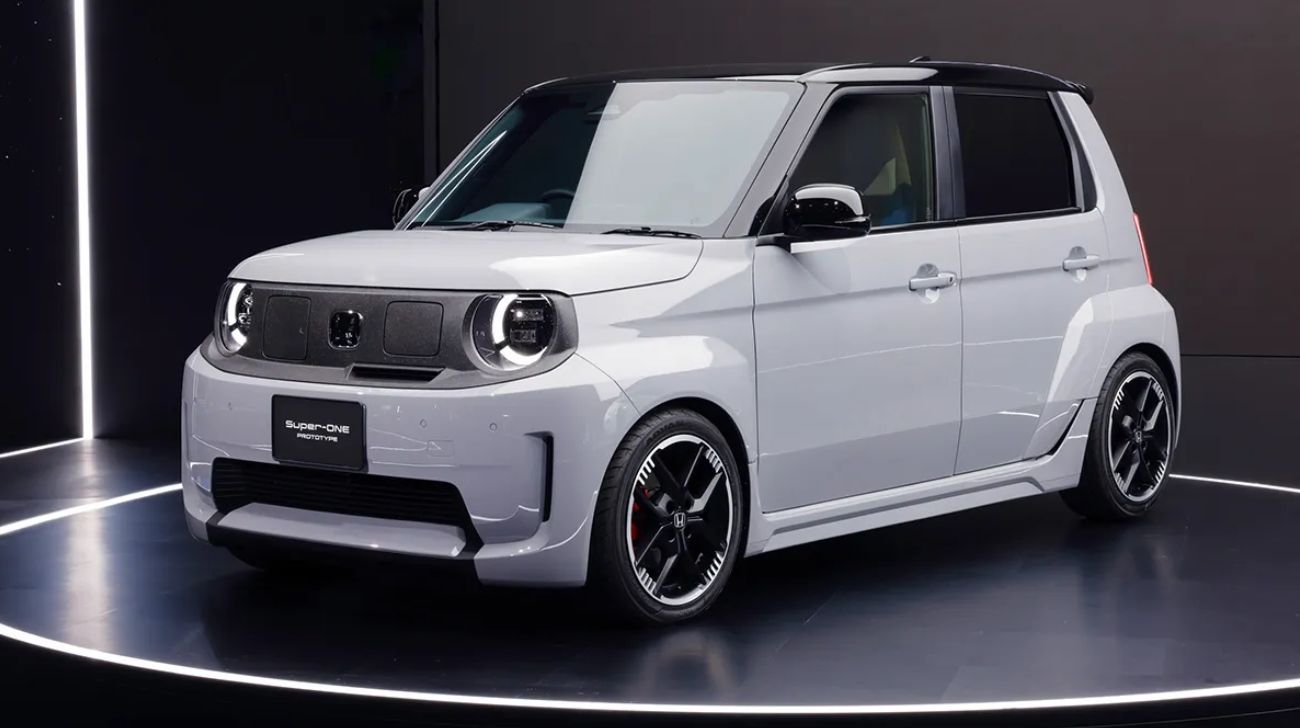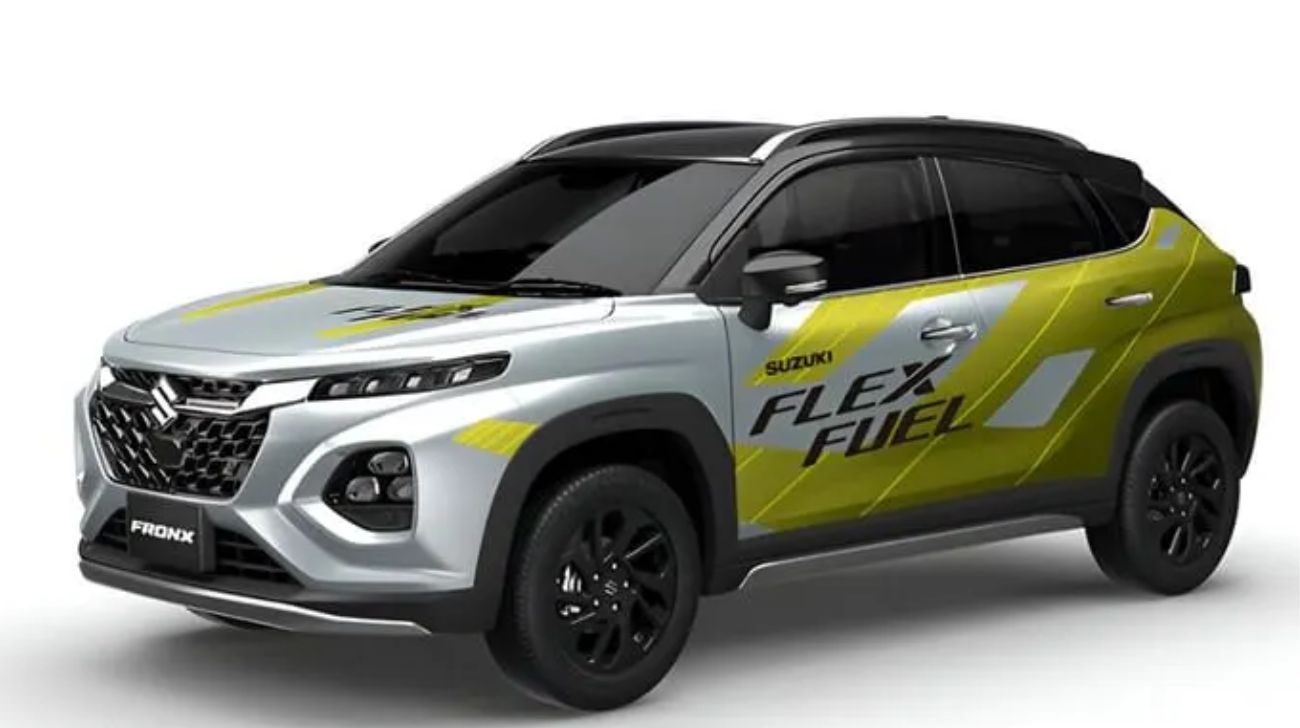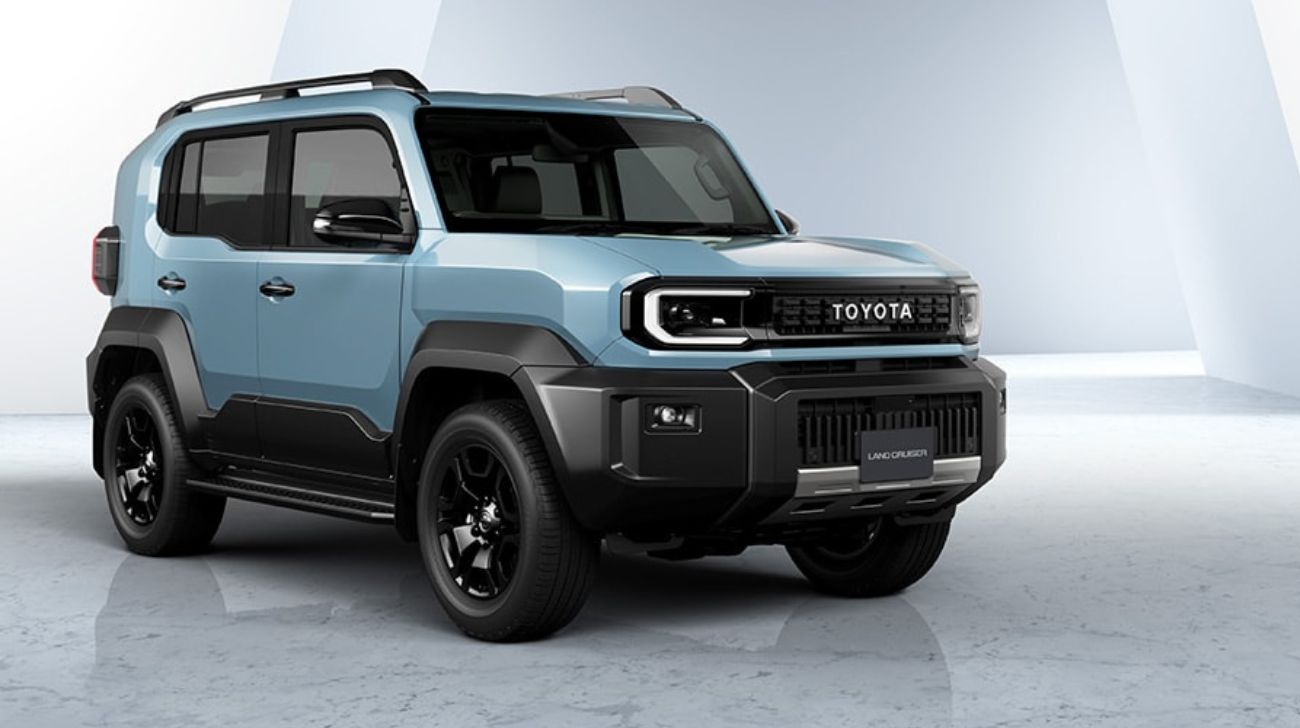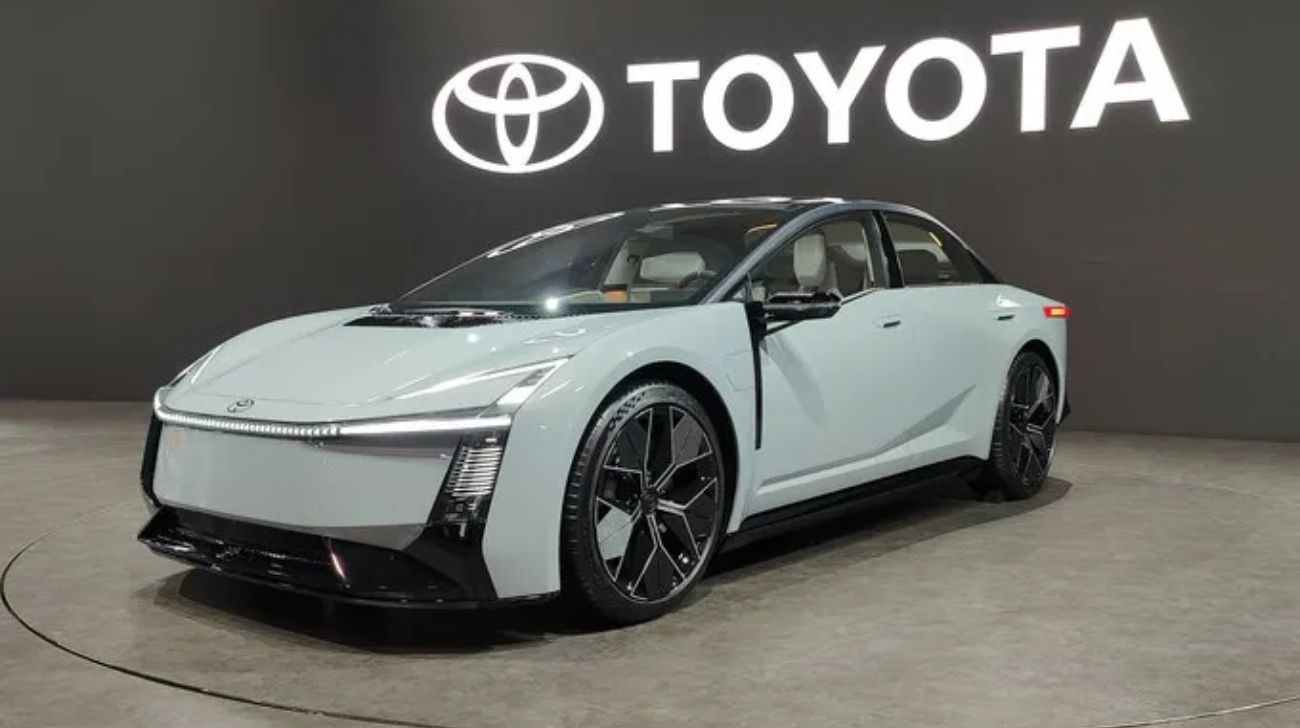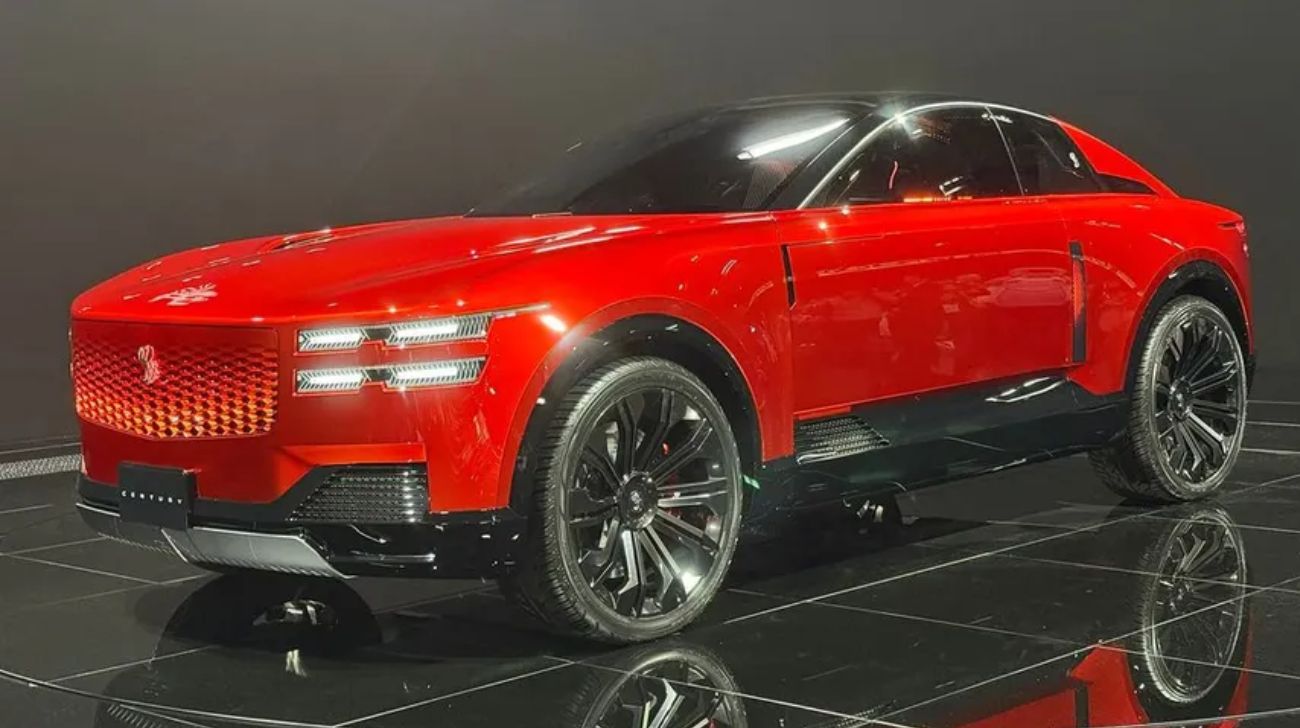HONDA: Clear signals and a reset of intent
Honda arrived at the show with clarity. For some time, the company appeared unsure about its next moves in the EV era. Honda has always had engineering capability. It has delivered iconic engines and dynamic cars in the past. Recently, it has felt quieter. In Tokyo, the brand showed a shift. There was no nostalgia. The focus was on its next decade and India featured in that plan. The message was simple. Honda will build EVs for India and it will scale its SUV portfolio.
Honda 0 α EV
The Honda 0 α SUV concept forms the entry point to Honda’s new 0 Series EV family. This is a global model with India positioned as a core market. Honda confirmed production for India and Japan beginning in 2027. Unlike the larger 0 SUV that will come through the CBU route to India next year, the 0 α will be produced locally. This is a strategic decision and marks an important shift in Honda’s India EV approach. The concept is smaller than the 0 SUV seen earlier this year at CES. The design direction is shared. Honda refers to the philosophy as Thin Light and Wise. The stance is upright. The front windscreen is raked sharply, and the rear screen is vertical. The window line rises towards the rear and meets a thick C pillar that brings a touch of MPV form. There is a small roof spoiler. The illuminated Honda badge sits on the front panel with the charging port integrated. Headlamps frame the badge. A deep chin section flows into thick body cladding. Aero styled 19-inch five-spoke alloys sit in pronounced arches. At the rear, the full-width U-shaped lamp treatment stands out. The bumper carries a prominent faux bash plate and the lower light units are integrated within it. Honda design executive Taku Fukui confirmed the concept is close to production. Most exterior elements shown are expected to reach the road car. Honda did not reveal the cabin. However, in a conversation
with chief engineer Toshikazu Hirose, the focus was clear. The wheelbase will be between 2700mm and 2800mm. The goal is to maximise interior space. The upright tailgate should support good luggage volume. Hirose confirmed two LFP battery options for production. LFP chemistry has been chosen for its suitability for high temperature markets such as India. While final capacities were not disclosed, the range is likely between 65kWh and 75kWh. The SUV will
launch as a Front Wheel Drive single-motor version.
Segment positioning and rivals
The Honda 0 α will compete directly with the Maruti e Vitara in India and other markets. It will also face the Mahindra BE 6 MG ZS EV, Hyundai Creta Electric and Tata Curvv EV. Estimated pricing is Rs 25 lakh to Rs 30 lakh. This positions Honda in a competitive segment. It also signals that the brand is ready to take electric demand seriously in India. Honda’s India roadmap Honda used the show to reinforce its India plan. The company targets ten launches by 2030, with seven of them being SUVs. This reflects the shift in its understanding of the Indian market. Sedans once formed Honda’s core in the country. The shift to SUVs is now fully accepted internally.
Honda Super One
A different kind of highlight came from the compact side. The Honda Super One, also referred to as Super N in the UK due to trademark conflict, is a five-door electric kei-style city car. It adopts a tall stance with tiny wheels and a compact footprint. The look draws inspiration from small performance rally cars of a past era. In Japan, this is positioned as an urban mobility solution. It serves as a reminder that compact EVs can still carry character. Honda clarified the naming change for the UK market, where Super One is already trademarked by a karting championship. The presence of this model at the show offers
insight into the brand’s thinking around compact electrified mobility. Honda’s stand conveyed renewed purpose. There was no flamboyance. Instead, there was structure. Engineering direction. A defined India commitment. It was a clear return to form in a realistic way.
Maruti Suzuki:Relevance built through consistency
Maruti Suzuki chose not to follow the EV headline strategy seen elsewhere. The brand stayed aligned with its belief in varied fuel solutions and practical pathways. The approach remains rooted in Indian market realities. Maruti Suzuki has long studied the needs of cost-conscious mass mobility buyers. At the show, it showcased alternate fuel options rather than present pure electric dominance narratives.
Fronx Flex Fuel
The highlight was the Fronx flex fuel concept. It is based on the regular Fronx but with a modified 1.2 litre petrol engine capable of handling blends of ethanol up to E85. This movement aligns with India’s ethanol roadmap. The engine architecture is shared with the Wagon R flex fuel concept. Suzuki has not disclosed detailed output numbers but confirmed compliance with high ethanol blends. There are no styling changes beyond decals that identify the flex fuel capability. Production units could carry a flex fuel badge similar to Maruti’s hybrid models. This shows Suzuki’s practical approach to energy diversification. Rather than committing to a single technology path, the brand is developing ethanol, CNG and BEV portfolios. The company displayed the Victoris in CBG and CNG formats, reinforcing the multi-fuel strategy.
Suzuki XBEE facelift
Suzuki also showcased the updated XBEE compact crossover. The XBEE sits in the kei-inspired compact segment and has been on sale in Japan since 2017. The facelift includes new round headlamps, updated grille with silver accents, thicker cladding and fresh dualtone paint options. New alloy wheels add a more premium look. The silhouette remains boxy with similarities to the Maruti S Presso, but with greater length. The cabin receives a new steering wheel similar to the Victoris and a new digital instrument cluster. The dashboard layout is modern with switchgear seen in recent Suzuki models. The high-mounted infotainment screen resembles that of the Jimny. Clever storage touches remain a priority. The updated XBEE uses Suzuki’s Heartect platform and shifts from the earlier 1.0 litre turbo petrol to the Z12E 1.2 litre three cylinder mild hybrid engine. It is paired with a CVT and Front Wheel Drive. For India, Suzuki has no plans to introduce the XBEE. If it did arrive, it would sit near the Tata Punch and Hyundai Exter. The decision not to bring it aligns with
Maruti’s existing product space and pricing dynamics.Maruti Suzuki’s presence demonstrated consistency. The brand does not chase trends. It prepares gradual fuel diversification suited to market realities. The company continues to stay tuned to mass mobility needs.
TOYOTA:Structured long-term strategy
Toyota’s presence at the show was significant. Crowds gathered early. The company remains a benchmark for long-term automotive planning. Critics have pointed out Toyota’s slower EV ramp-up. However, the brand’s strategy spans hybrid plug-in hybrid, hydrogen and EV. The show reflected that multi-path philosophy. It also reflected attention to India as a key market in the future landscape.
Land Cruiser FJ
Toyota revealed the Land Cruiser FJ, a new compact addition to the Land Cruiser line. The design references the FJ40 and the more recent FJ Cruiser. Boxy, upright and functional, the form communicates durability. Toyota did not disclose full specifications but confirmed a 2.7 litre petrol engine producing 159hp and 246Nm paired with a six-speed automatic. Four Wheel Drive engagement is selectable. The vehicle sits around 11 inches shorter than the Land
Cruiser 250, which should help with manoeuvrability in tight spaces. The model uses a platform relation to the Hilux with strengthened underbody elements for off-road durability. Toyota integrated removable bumper corner sections to simplify repair after trail damage. The interior is functional with straps and mounting points for accessories and equipment. A large central display and straightforward controls maintain practicality. The FJ will launch in Japan in mid-2026 and reach other markets such as Thailand and Australia. Toyota has not confirmed an India launch. If brought here, it could appeal to buyers seeking a smaller, rugged SUV. For now, Toyota is watching market demand.
New Corolla concept
Toyota also showed a Corolla concept signalling future direction for one of the world’s most recognised nameplates. The stated objective was to make the next Corolla visually appealing while maintaining environmental responsibility. The styling is low-slung and sporty. Light bars front and rear create a modern identity. Toyota intends future Corolla models to support multiple powertrains, including battery EV, hybrid, plug-in hybrid and internal combustion capable of hydrogen fuel. Toyota recently announced smaller, lighter hybrid optimised engines, and these are likely to be part of the next Corolla family. The current generation has been in production since 2018, so the successor is not far off. Toyota did not specify launch timing but indicated global application beyond China, where separate leak images appeared. The concept suggests Toyota’s plan to balance familiarity with modernisation rather than reinventing the sedan form.
Century Coupe
Toyota provided a preview of the Century brand evolution. The Century name has long represented discreet Japanese state-level luxury. By separating Century as its own entity, the company aims to elevate it above Lexus. The coupe concept shown at the show presents a high-riding grand touring design. The long bonnet, sliding doors and fastback shape differentiate it from typical luxury sedans. The orange paint is complex with a multi-layer finish. The interior layout is unusual. There is a single rear seat behind the driver and a reclining passenger seat with the removal of the traditional front passenger seat
to create maximum legroom. The seat swivels for easier ingress. The opposing sliding doors eliminate a central pillar. Details reflect bespoke craftsmanship. Toyota did not release technical data. The production Century sedan uses a 5.0 litre V8, and the SUV uses a hybrid 3.5 litre V6. The coupe could follow a similar direction. Pricing is expected to align with high-end luxury grand tourers. Launch timing has not been communicated. The Century brand approach shows Toyota’s intent to enter the ultra-luxury space in a controlled manner. Toyota’s stand underlined strategic pacing. Multiple fuel solutions. Gradual step-ups. Planned luxury positioning. No rush to dominate headlines. Instead, a broad platform that supports varied mobility requirements.
LEXUS
Lexus approached the show with a concept that challenges conventional body formats. The LS Concept reimagines luxury transportation as a six-wheeled electric minivan. Lexus referred to it as Luxury Space. The goal is to deliver lounge-like comfort. Lexus sees a demand case in chauffeur-driven environments, particularly in markets where private vans gain traction. The question is whether this format can work globally. Lexus seems prepared to explore.
Lexus LS Concept
The LS Concept features six wheels with four at the rear. Lexus says this supports expanded interior space and stability. The doors open wide and provide easy entry. The cabin uses Japanese craftsmanship with bamboo materials. Seating is arranged to encourage passenger interaction. The vehicle prioritises comfort and serenity. Lexus has not disclosed detailed specifications but suggests electric propulsion and advanced ride systems. Exterior lighting elements adopt sharp vertical and horizontal shapes. The roofline is flat with large glass panels. The driver’s controls are central but can shift left or right. The configuration is expected to suit the chauffeur’s use. Lexus believes the multi-wheel setup can improve ride stability and possibly steering. Whether this
reaches production remains unclear. The design is distinctive and serves as a study of future luxury people movement. The Lexus approach reflects a willingness to experiment within a clear luxury framework. While the form is uncommon, the principles of comfort, craft and refinement remain consistent.
Conclusion
The Japan Mobility Show 2025 presented a steady and grounded view of the future. There were no sweeping claims about radical transformation. Honda outlined a clear EV and India strategy with the 0 α leading the charge. Maruti Suzuki reinforced its multi-fuel practical pathway with flex fuel and CNG technology. Toyota demonstrated long-term planning with multi-powertrain direction and a mix of utilitarian and luxury concepts. Lexus examined luxury
mobility in a new form. Japan is often viewed as conservative in its automotive transitions. The show suggested something different. The industry here remains focused on engineering execution and market suitability. India appeared prominently in planning discussions. For Indian buyers and industry watchers, the message is that Japan does not intend to retreat from leadership. It simply prefers a methodical movement to the next phase of automotive mobility.The Japan Mobility Show confirmed that the automotive future will not be singular. It will offer multiple pathways, technologies and market
strategies. Japan continues to build quietly. It continues to prioritise function and user needs. That has always been its strength.


